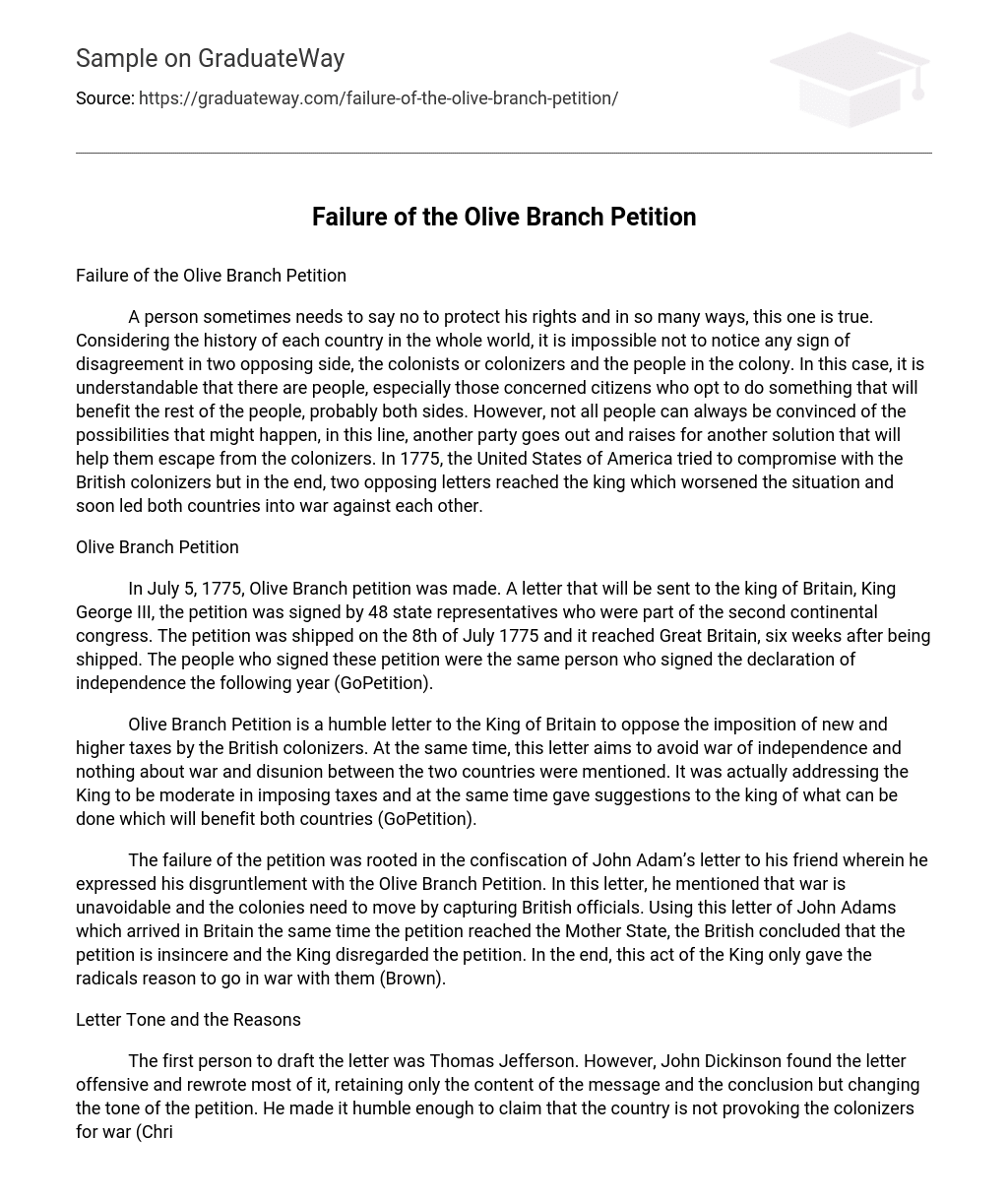A person sometimes needs to say no to protect his rights and in so many ways, this one is true. Considering the history of each country in the whole world, it is impossible not to notice any sign of disagreement in two opposing side, the colonists or colonizers and the people in the colony. In this case, it is understandable that there are people, especially those concerned citizens who opt to do something that will benefit the rest of the people, probably both sides. However, not all people can always be convinced of the possibilities that might happen, in this line, another party goes out and raises for another solution that will help them escape from the colonizers. In 1775, the United States of America tried to compromise with the British colonizers but in the end, two opposing letters reached the king which worsened the situation and soon led both countries into war against each other.
Olive Branch Petition
In July 5, 1775, Olive Branch petition was made. A letter that will be sent to the king of Britain, King George III, the petition was signed by 48 state representatives who were part of the second continental congress. The petition was shipped on the 8th of July 1775 and it reached Great Britain, six weeks after being shipped. The people who signed these petition were the same person who signed the declaration of independence the following year (GoPetition).
Olive Branch Petition is a humble letter to the King of Britain to oppose the imposition of new and higher taxes by the British colonizers. At the same time, this letter aims to avoid war of independence and nothing about war and disunion between the two countries were mentioned. It was actually addressing the King to be moderate in imposing taxes and at the same time gave suggestions to the king of what can be done which will benefit both countries (GoPetition).
The failure of the petition was rooted in the confiscation of John Adam’s letter to his friend wherein he expressed his disgruntlement with the Olive Branch Petition. In this letter, he mentioned that war is unavoidable and the colonies need to move by capturing British officials. Using this letter of John Adams which arrived in Britain the same time the petition reached the Mother State, the British concluded that the petition is insincere and the King disregarded the petition. In the end, this act of the King only gave the radicals reason to go in war with them (Brown).
Letter Tone and the Reasons
The first person to draft the letter was Thomas Jefferson. However, John Dickinson found the letter offensive and rewrote most of it, retaining only the content of the message and the conclusion but changing the tone of the petition. He made it humble enough to claim that the country is not provoking the colonizers for war (Christie and Labaree). Despite of this tone, the letter was disregarded and was not given importance. However, for the Americans, this petition is very important for its rejection allowed them to make a move against their colonizers.
The reason why the Second Continental Congress used a humble tone is to shun war. In this line, the author of the petition who was John Dickinson has to work hard not to allow his temper to ruin the letter (US-History.Org). He was hoping for the possibilities of reconciliation (US-History.Org) that he made the letter humble. However in the end, the petition was rejected and war soon followed.
Works Cited
Brown, Weldon A. “Empire or independence; A Study in the Failure of Reconciliation, 1774- 1783”. Port Washington, N. Y., Kennikat Press; 1966, c1941.
Christie, Ian R; Labaree, Benjamin W. “Empire or Independence, 1760-1776: A British- American Dialogue on the Coming of the American Revolution”. New York : Norton, c1976.
GoPetition. “The Olive Branch Petition, 1775”. Retrieved February 11, 2009 from http://www.gopetition.com/olivebranchpetition.php
US-History.Org. “John Dickinson”. Retrieved February 12, 2009 from http://www.ushistory.org/declaration/related/dickinson.htm





